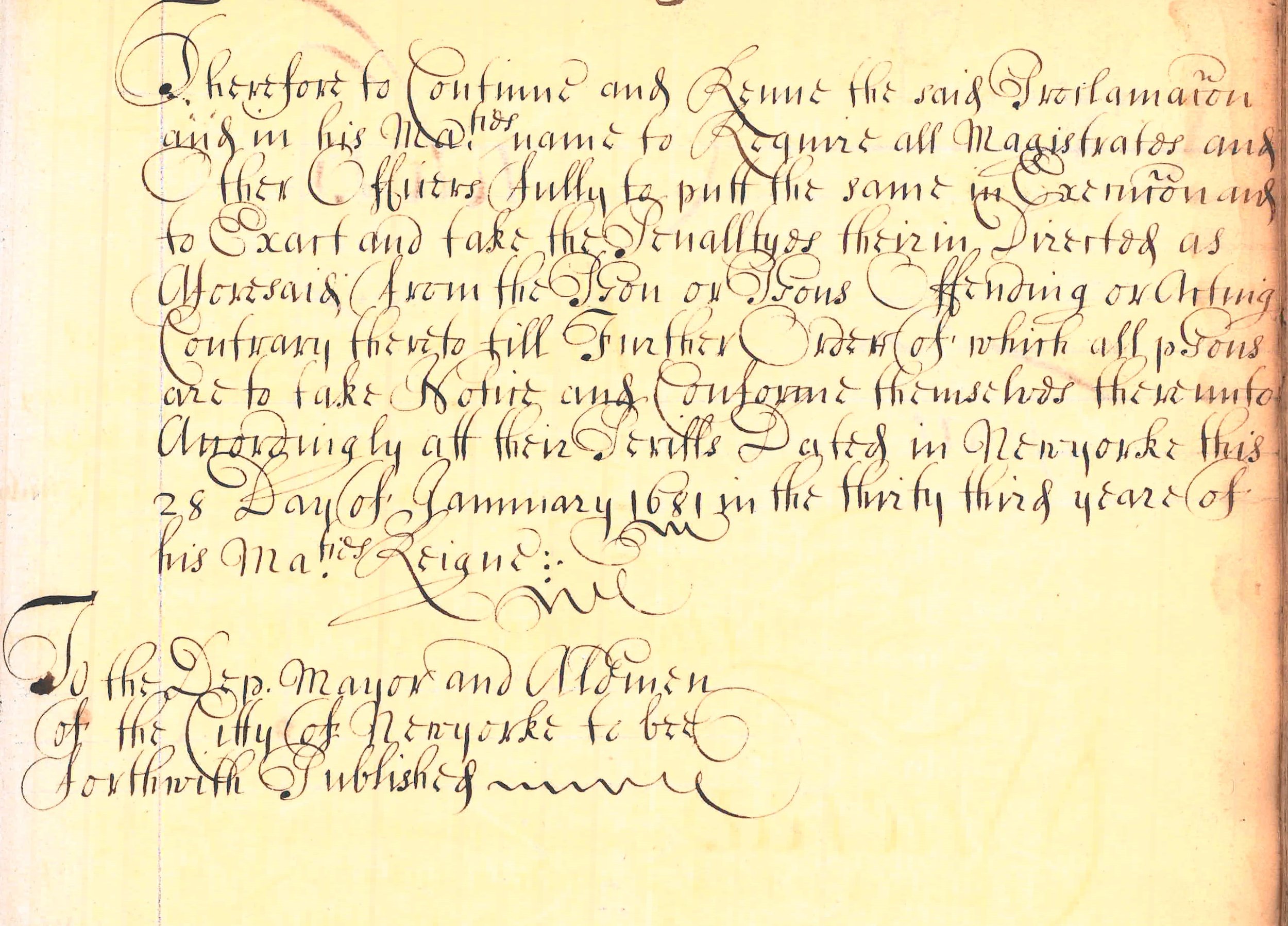In 1624, the sailing vessel Nieuw Nederland, sponsored by the Dutch West India Company, arrived at what is now Governor’s Island. The ship brought colonists who established a fur-trading post. In 1625, the settlers moved to what is now lower Manhattan along with an official akin to a sheriff, establishing the first government in the colony.
This year, and continuing through 2025, programs and special events will mark founding of the Dutch colony and formation of a government, four hundred years ago. Cultural institutions around the city, as well as the New Amsterdam History Center and other organizations, many with support from the government of the Netherlands, are sponsoring commemorative activities.
During previous milestone anniversaries, organizers mostly celebrated the city’s progress in transportation, health, housing, education, etc. as it grew to become one of the largest metropolitan regions in the world.
An Indian Village of the Manhattans, Valentine’s Manual, 1858. NYC Municipal Library.
These achievements were certainly worthy of recognition, but the narratives generally did not address the impact of the European settlements on the indigenous population. According to historians William Burrows and Mike Wallace “By the time Europeans appeared on the scene . . .what is now New York City had as many as fifteen thousand inhabitants—estimates vary widely—with perhaps another thirty to fifty thousand in the adjacent parts of New Jersey, Connecticut, Westchester County, and Long Island.” The inhabitants of this region were the Lenape, also known as the Lenni Lenape, or Munsee, and later as the Delaware. (Gotham, 1993.)
Today, anniversary organizers are endeavoring to weave the experience of indigenous peoples into programs and events. The lack of traditional documentary evidence makes this worthy effort a challenge. Eric W. Sanderson, author of Mannahatta: A Natural History of New York City, summarized the problem: “Much of what we can say about the Lenape on Manhattan comes from a composite of archeological evidence, historical anecdotes, folk etymologies, interview with modern Lenape, and inference from other places. Which is to say, what we know for certain is really very little.”
The Municipal Archives’ Old Town, New Amsterdam and Common Council collections comprise some of these relatively few sources of information documenting the indigenous population of what would become New York City. It is important to note that these records, all created by the colonists, are inherently biased. Imperfect as they may be, however, they do provide some useful data and will continue to inform scholarship.
For the Record previously highlighted the Old Town collection and references to indigenous peoples, in Indexing the Dutch Records of Kings County. This week’s article looks at the New Amsterdam and Common Council collection. The records for the time period 1647-1831 have been transcribed, printed, and indexed. Scanning the indexes reveals the mostly negative nature of interactions between the colonists and the indigenous peoples. Citations under the index term “Indians” from the Dutch era include: “inquiry into the massacre by; property lost in troubles with; fine for lodging; etc. For the English-colonial period, after 1664, there are citations such as “selling liquors to, prohibited; trading with, without license prohibited; penalty for harboring,” and so on.
Turning to the first relevant entry in the English-translated version of the New Amsterdam records dates from July 1, 1647. It addresses what seems to have been a recurring theme in legislative action regarding indigenous peoples: regulating liquor.
Manuscript Minutes of the Common Council, 20 April 1680. NYC Municipal Archives.
“Whereas daily a great deal of strong liquor is sold to Indians, which before now has caused great difficulties to the country, and because it has become necessary to prevent a recurrent of these difficulties in time—therefore the Director General and Council of the New Netherland forbid all tapsters and other inhabitants henceforth to sell any wine, beer or strong liquors to the savages. . . .”.
Moving ahead to the English colonial period, the entries continue in this fashion. They are readily accessible in the printed and published editions of the Minutes of the Common Council 1674-1776 and 1783-1831. Reproduced below are several entries from the original manuscript version of the Minutes preserved in the Municipal Archives. They have been selected primarily for legibility. Please note that language used in the 17th century may not conform with current values.
In 1680, the Council resolved that “All Indians here have always been and are free and not slaves, nor forced to be servants.
In January 1681, the Council issued a proclamation renewing a former proclamation that prohibited trade with the Indians in their Towns and Plantations.
Manuscript Minutes of the Common Council, 28 January 1681, page 1 of 2. NYC Municipal Archives.
Manuscript Minutes of the Common Council, 28 January 1681, page 2 of 2. NYC Municipal Archives.
In 1686, the Council again issued a proclamation about “Harbouring or trading with Indians.”
Manuscript Minutes of the Common Council, 15 April 1886. NYC Municipal Archives.
Look for future For the Record posts to continue the story of the indigenous peoples of New York City.




